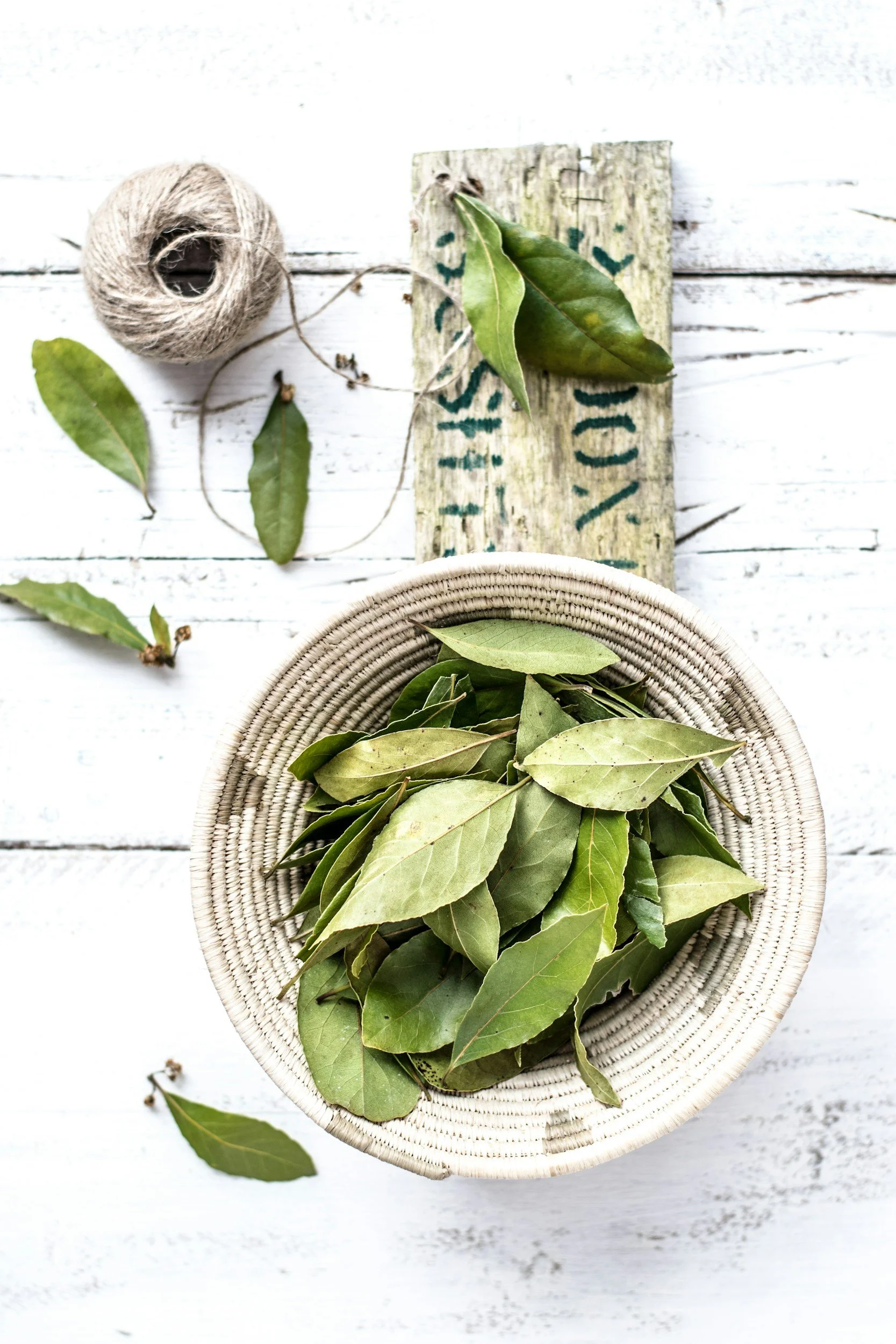Bay Leaves
The Unsung Hero of Your Kitchen (and Beyond!)
For too long, bay leaves have been the subject of debate and skepticism in kitchens everywhere. Many believe they are pointless, a mere garnish without true flavor. Even some culinary professionals admit to not noticing much difference with or without them. But let's put this "bay leaf controversy" to bed once and for all: Bay leaves are 100% legit and a treasure trove of health benefits.
Originating from the bay laurel tree (Laurus nobilis) native to the Mediterranean, these aromatic leaves have been used for thousands of years in both cooking and traditional medicine.
The Flavor Myth Debunked: They Absolutely Have Flavor!
It's true that a dried bay leaf might not smell as strong as other dried herbs. But when infused into liquids or cooked slowly, an "almost minty flavor (somewhere between spearmint and menthol) develops, with subtle hints of black pepper and Christmas tree pine". They also add a subtle bitterness that prevents heavy dishes from being overly rich. The flavor of bay leaf "whispers" rather than "shouts," meaning you might not pick it out, but you'd certainly miss its absence.
Complex Aroma and Taste: Bay leaves offer a depth of flavor that is described as floral, herbal, bitter, and earthy. They contain over 50 distinct elements that can be coaxed out during cooking.
Scientific Basis: Their unique flavor and aroma come from volatile oils like eucalyptol, linalool, and pinene, which are released when heated. They also contain flavonoids (like quercetin and kaempferol) with antioxidant properties, and tannins (like gallic acid and ellagic acid) which provide an astringent, bitter taste that balances other ingredients.
Fresh vs. Dried: Fresh bay leaves are more pungent and have a more vibrant, aromatic flavor than dried ones.
Variety Matters: Not all bay leaves are created equal. Different species offer distinct flavor profiles:
Turkish bay leaves (Laurus nobilis) are the most common, known for a mild, herbaceous, and menthol flavor.
California bay leaves (Umbellularia californica) are more robust and pungent, with notes of eucalyptus, camphor, and nutmeg.
Indian bay leaves (Cinnamomum tamala) have a sweet, spicy, cinnamon-like flavor.
Other types include Indonesian, West Indian, and Mexican bay leaves, each with unique aromatic qualities.
Potency and Storage: A key reason some don't perceive flavor is due to old, less potent leaves. Bay leaves lose their strength within a few months if not stored properly.
Culinary Versatility: Beyond Just Savory Dishes
Bay leaves are a chef's secret weapon for adding depth and complexity. They are ingrained in the essential flavors of many global cuisines, from European and Mediterranean to Middle Eastern, Southeast Asian, and Caribbean.
Classic Savory Applications: They are a classic addition to:
Soups and Stews, especially those with beans, lentils, or root vegetables (e.g., French onion soup, beef stew, lentil soup).
Braises and Roasted Meats (e.g., pot roast, braised short ribs, roasted chicken).
Curries and Stews from India and Southeast Asia (e.g., chicken tikka masala, Thai red curry, Indonesian beef stew).
Rice dishes and Sauces.
Unexpected Sweet Uses: Don't limit them to savory! Bay leaves can also be used in:
Desserts like panna cotta, pound cakes, cookies, and creams, where they impart a minty, aromatic element.
Drinks such as liqueurs, rum, gin, vodka, and even zero-proof cocktails or teas.
Maximizing Flavor:
Slow Cooking: Bay leaves need time to infuse their essence. They work particularly well in dishes that cook for at least an hour.
Add Early with Fat: Tossing bay leaves into oil at the beginning of cooking helps release their fat-soluble flavors more efficiently.
Remove Before Serving: While safe to eat, bay leaves do not soften during cooking and their rigid, sharp texture makes them unpleasant to consume, so remember to remove them before serving.
Impressive Health Benefits
Beyond their culinary charm, bay leaves are a treasure trove of health benefits, packed with vitamins, minerals, and powerful plant compounds.
Improves Digestion: They stimulate digestive enzymes, aiding in efficient food breakdown and acting as a natural remedy for indigestion, bloating, and constipation.
Supports Heart Health: Rich in compounds like rutin and caffeic acid, they strengthen blood vessel walls and reduce cholesterol, lowering the risk of heart disease.
Boosts Immunity: Packed with vitamins A and C and antioxidants, bay leaves protect against infections by combating free radicals and supporting white blood cell production.
Reduces Inflammation: Essential oils containing anti-inflammatory compounds like eugenol help reduce swelling and pain, beneficial for conditions like arthritis and muscle soreness.
Enhances Respiratory Health: Their natural antibacterial and anti-inflammatory properties can relieve congestion, coughs, and sinus pressure when inhaled as vapors.
Regulates Blood Sugar Levels: Research suggests they may improve insulin function, beneficial for individuals with or at risk of diabetes.
Beyond the Plate: Other Uses
Food Preservation: The natural compound eugenol in bay leaves possesses antimicrobial properties, inhibiting bacterial and fungal growth. They can be placed in dry storage to repel insects or added to pickling brines and marinades to inhibit spoilage.
Smart Shopping and Storage Tips
To truly appreciate bay leaves, how you buy and store them matters.
Shopping: Look for whole leaves with no discoloration, tears, or holes. They should have a strong aroma of eucalyptus, mint, and spice. Larger leaves often have more flavor. Consider buying organic for more robust flavor.
Storage: Store bay leaves in a cool, dry, dark place in an airtight container for up to six months. For maximum freshness and potency, freeze them for up to three years. If a dried leaf doesn't release a pungent, herbaceous aroma when crumbled, it has lost its potency and should be discarded.
So, the next time you reach for that jar, remember that bay leaves are far from "pointless." They are a powerhouse ingredient, ready to add depth, complexity, and a host of benefits to your culinary creations. Give them a chance – your taste buds (and your health) will thank you!


